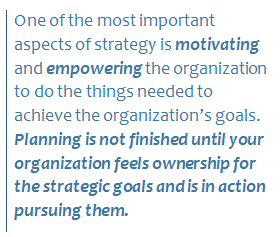How do organizations change? As managers, we like to feel that we have change under control. If we put a good plan in place, resource it correctly and monitor progress against objectives, we should realize the desired changes. Most of us, however, do not need to look far to find examples where our organizations evolved very differently than our plans intended. To be sure, the environment we all operate in is subject to change, and good planning expects it and supports adjustment. So why is the change we want so hard to achieve?
One answer involves our understanding of change itself. Organizations change not only through planned activities but also through many unplanned activities. Individuals within an organization make numerous decisions every day, and some of those decisions will change the whole organization. Price concession in deals needed to make quota, a new partnership set up by someone lower in the organization that expands market reach, a brand message adjusted to fit a particular product or promotion. All of these activities can profoundly change an organization.

Often the changes from these activities are exactly what we want. However, when the unplanned changes do not support the achievement of our goals, we need to look closely at how we have communicated our strategy and empowered our organizations. It is our job as leaders to recognize how change happens and do the things needed to align both the formal planned actions and the unplanned actions with our strategic goals. There are three main strategies to align change with goals:
1. Recognize and acknowledge that the organization will change from both planned and unplanned activities over the planning horizon.
2. Accept that learning is a key part of achieving the changes you seek and realize that it is impossible to know everything.
3. Drive ownership for the strategy to all management levels of the organization. Communicate your vision so everyone is clear where the organization needs to go. Expand on it so the targets are clear, and share ownership beyond the management team’s door by letting others contribute to the details.
Remember, one of the most important aspects of strategy is motivating and empowering the organization to do the things needed to achieve the organization’s goals. Planning is not finished until your organization feels ownership for the strategic goals and is in action pursuing them.

